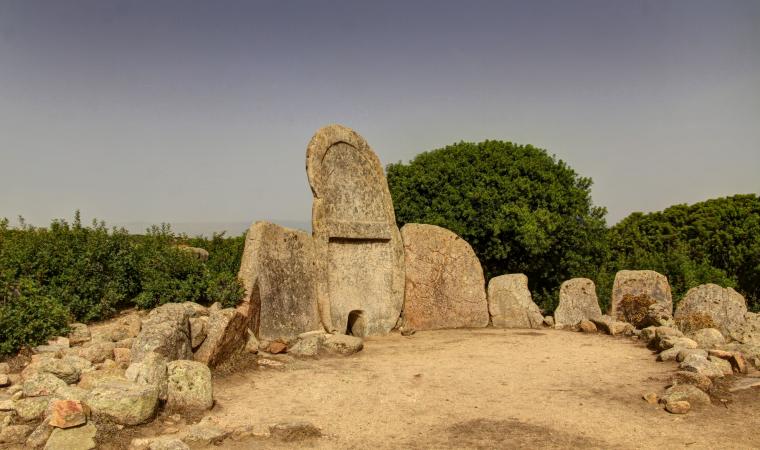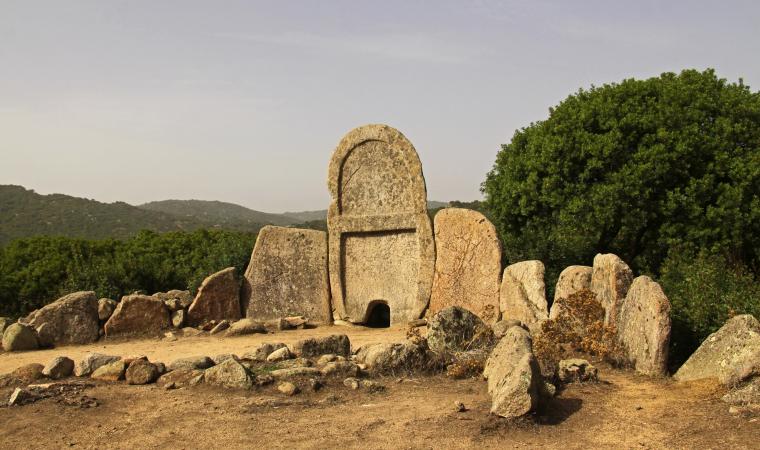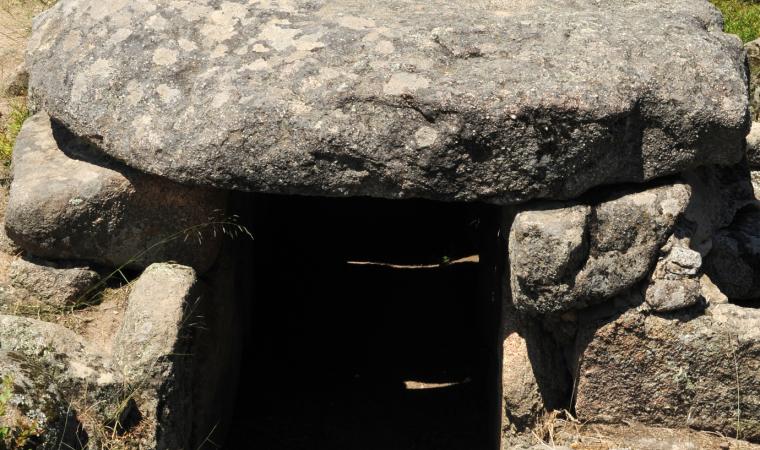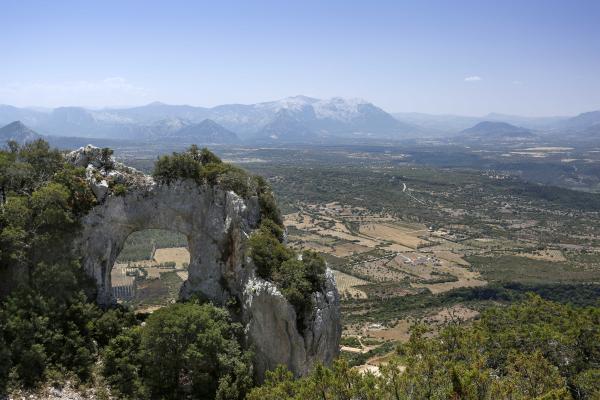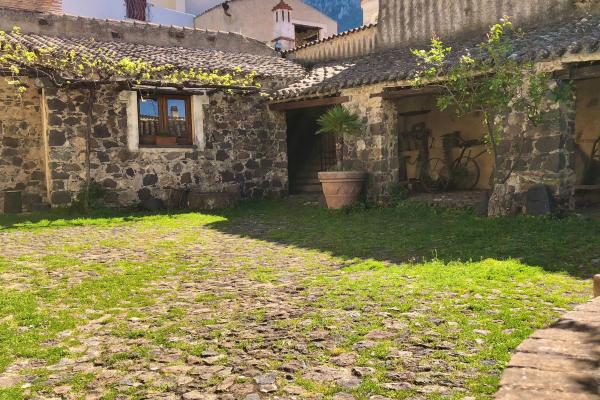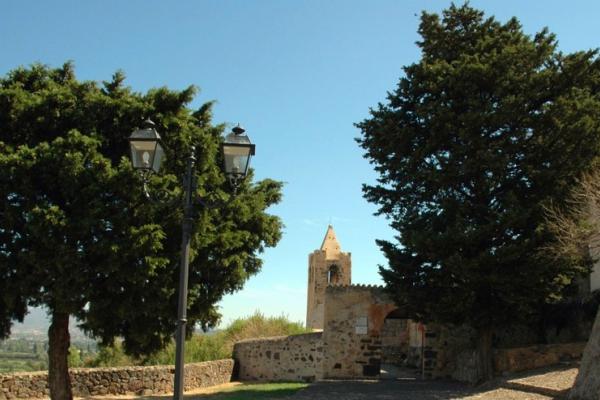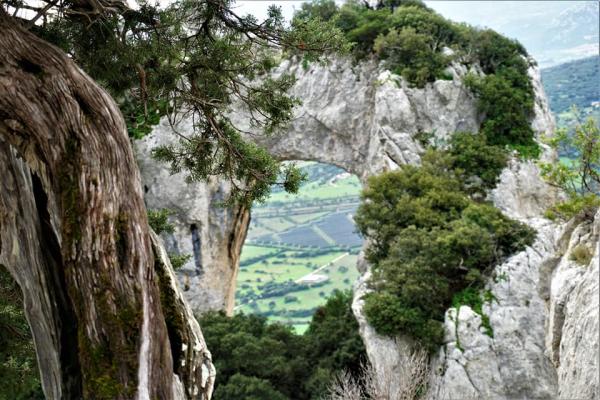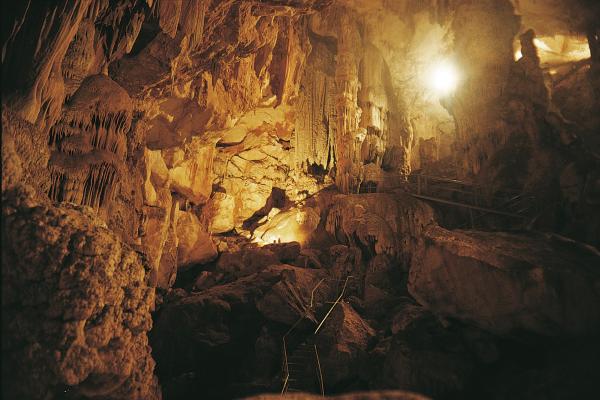You will see its enormous stele, a granite slab almost four metres high, standing out in the valley of the Isalle rivulet, at the end of a trail half a kilometre long and covered in Mediterranean scrub. The Tomb of the Giants of S'Ena 'e Thomes is the most important Nuragic burial monument on the island: it is majestic, just like it was thousands of years ago. Dating back to the Early Bronze Age (1800-1600 BC), it is located in the Dorgali territory, six kilometres from the Nuragic village of Serra Orrios and approximately 17 km from the residential area, along the road that leads to Lula.
Your impression will be one of archaism and monumentality. The granite stele with smooth edges weighs seven tonnes and is at the centre of an exedra, or a semicircle of stone slabs 'laid on edge' set in the ground in the shape of a bull's horn, decreasing in size from the centre outwards.
You will see its enormous stele, a granite slab almost four metres high, standing out in the valley of the Isalle rivulet, at the end of a trail half a kilometre long and covered in Mediterranean scrub. The Tomb of the Giants of S'Ena 'e Thomes is the most important Nuragic burial monument on the island: it is majestic, just like it was thousands of years ago. Dating back to the Early Bronze Age (1800-1600 BC), it is located in the Dorgali territory, six kilometres from the Nuragic village of Serra Orrios and approximately 17 km from the residential area, along the road that leads to Lula.
Your impression will be one of archaism and monumentality. The granite stele with smooth edges weighs seven tonnes and is at the centre of an exedra, or a semicircle of stone slabs 'laid on edge' set in the ground in the shape of a bull's horn, decreasing in size from the centre outwards. They delimit the sacred area, where ancestral funeral rituals were officiated. A symbolic little door has been carved out of the stele, giving access to the gods of the underworld, and is so small that it is inaccessible to living beings. Behind it, almost intact, there is the dolmen funerary corridor, 11 metres long, with a jack arch roof: the stone slabs are arranged horizontally along the walls. The mortuary is facing south, which is unusual compared to the 'eastern' facing ones in many other Nuragic tombs. This is true also in the burial sites of Goronna (Paulilatino) and Baddu Pirastru (Thiesi). According to legend, the tombs of the giants were used by huge beings: the gigantic size make the origin of the name clear. In reality, they were collective burial places. S'Ena 'e Thomes also confirms the fact that, for the Nuragic people, death made no distinctions: during the excavations, the meagre grave goods that were found do not point to any social disparities. The doubt about whether it was a mass grave or one reserved to a single class (aristocratic) still remains. They are also considered places that emit energy: researchers, spiritualists and people who are curious visit them, seeking physical healing or spiritual regeneration. In the ancient ritual, also widespread in Greek culture, a person would fall into a trance, thus entering into contact with the divinity.


